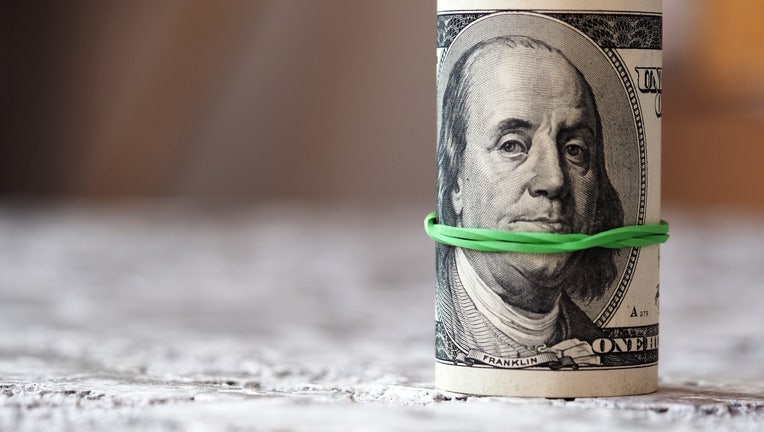Paycheck Protection Program: PPP loan portal reopens amid ongoing COVID-19 pandemic

In this photo illustration US dollar bills are seen displayed. (Photo Illustration by Igor Golovniov/SOPA Images/LightRocket via Getty Images)
WASHINGTON - A loan program meant to help small businesses stay afloat and pay their employees has returned five months after its first two rounds of funding ended.
The U.S. Small Business Administration and the U.S. Treasury Department relaunched the Paycheck Protection Program, or PPP, loan portal Monday.
"SBA is continuing its dedicated commitment to underserved small businesses and to addressing potential access to capital barriers," SBA officials said in a statement after tweeting the announcement.
In the latest funding round, businesses that received loans last year will be able to borrow up to $2 million as long as they have no more than 300 employees and suffered at least a 25% drop in quarterly revenue. First-time borrowers with no more than 500 workers will be able to borrow up to $10 million.
The loans, which can be forgiven, will have five-year terms and carry an interest rate of 1%.
The PPP is being restarted under the coronavirus relief bill Congress approved in late December, providing for $284 billion in new loans. The first two rounds, which began April 3 and ended Aug. 8, gave out more than 5.2 million loans worth a cumulative $525 billion.
The first round of the program saw overwhelming demand and the Small Business Administration approved $349 billion in loans in just two weeks.
Trump signed the latest COVID-19 relief bill into law in December after holding out for several days. The president said he wanted to increase stimulus checks, also part of the bill, from $600 to $2,000 per eligible person. He also cited other line items of spending with which he disagreed as the impetus for his delay in signing the legislation.
After Trump signed the bill, the House, led by Democrats, voted to raise the amount of the stimulus checks, but Senator Majority Leader Mitch McConnell, a Republican, refused to bring the measure to senators for an immediate vote.
RELATED: Pandemic and now cold weather batter NYC restaurants
The SBA will initially accept only applications submitted by community financial institutions, or CFIs — lenders whose customers are minority-owned and economically disadvantaged businesses. SBA said it would begin accepting applications from all its lenders within a few days of the initial period reserved for CFIs.
As with the first two rounds of the PPP, applications must be submitted online at banks and other SBA-approved lenders. All applications must be submitted and approved by March 31. Loan amounts are calculated using a company’s payroll expenses; businesses can use either their 2019 or 2020 payroll to compute how much they can ask for.
RELATED: Couple creates private dining room in their van to support local restaurants
But for many businesses, including restaurants, gyms and retailers that depend on people gathering in large numbers or in close quarters, the money from previous PPP loans was nowhere near enough as the pandemic continued to worsen and drag on. It’s estimated that well over 100,000 small U.S. businesses have shuttered since the outbreak began.
Moreover, many companies weren’t able to get loans, including newly formed businesses and those whose financial records didn’t meet bank requirements. Many businesses applied to multiple banks, often because they couldn’t get a response to their applications and subsequent inquiries — and many of these business owners gave up in frustration or ran out of time.
The Associated Press contributed to this report. This story was reported from Los Angeles.


